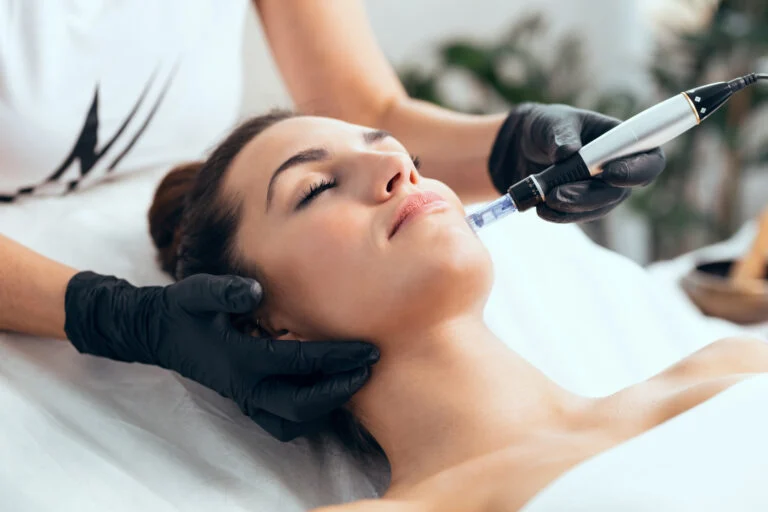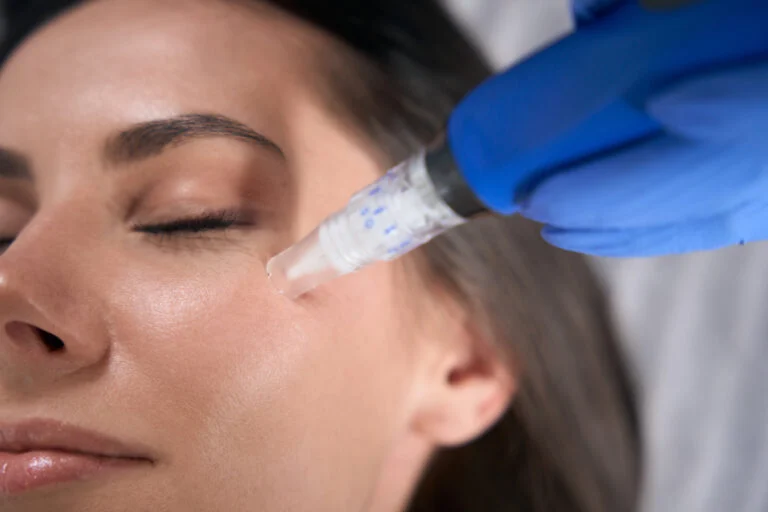Microneedling for Anti-Aging: A Natural, Non-Invasive Approach to Youthful Skin

What is Microneedling?
Microneedling, also known as collagen induction therapy, involves the use of a device with tiny, fine needles that create micro-injuries in the skin. These small punctures stimulate the body’s natural healing process, leading to the production of collagen and elastin—two key components that keep skin firm, smooth, and youthful. Unlike more invasive treatments like Botox or fillers, microneedling works by harnessing your skin’s own regenerative power.How Microneedling Reduces Wrinkles and Supports Anti-Aging
- Stimulates Collagen and Elastin Production The main reason microneedling is so effective at combating signs of aging is its ability to stimulate collagen and elastin production. When the needles create micro-injuries, the body’s repair mechanisms are activated. This leads to an increase in fibroblast activity, the cells responsible for creating collagen and elastin. Over time, this can visibly reduce the appearance of fine lines and wrinkles, leading to smoother, firmer skin.
- Improves Skin Texture and Tone Microneedling promotes better skin texture by enhancing circulation and stimulating cellular repair. As collagen production increases, the skin becomes more even-toned, with reduced pore size, fewer blemishes, and smoother overall texture. This can help address issues like rough patches, acne scars, and sun damage.
- Reduces Fine Lines and Wrinkles By encouraging collagen and elastin production, microneedling helps to fill in fine lines and reduce wrinkles. This makes the skin look plumper and more youthful. With regular treatments, the skin becomes firmer and more resilient, leading to a reduction in sagging, especially around common problem areas like the eyes, mouth, and forehead.
- Enhances Skin Hydration One of the immediate benefits of microneedling is improved skin hydration. As the procedure increases blood circulation and promotes collagen production, the skin becomes better able to retain moisture. This helps combat dryness, which is a common factor in aging skin, leaving you with a healthier, more hydrated complexion.
- Reduces the Appearance of Scars and Stretch Marks While microneedling is widely known for its anti-aging benefits, it also helps improve the appearance of scars and stretch marks. By stimulating the skin’s healing process, microneedling can reduce the visibility of acne scars, surgical scars, and stretch marks over time, offering a more even, smooth skin surface.
- Improves Skin Texture and Reduces Pore Size Microneedling helps to minimize the appearance of large pores by stimulating collagen production around the pores, which makes them appear smaller. The improved skin texture also leads to a more refined and youthful complexion.
What to Expect During a Microneedling Session
A typical microneedling session lasts between 30- 45 minutes. During the treatment, a topical numbing cream is applied to the skin to minimize discomfort. The practitioner then uses a microneedling device, which consists of small needles that create microchannels in the skin. While the sensation is generally painless, you may feel some mild discomfort or a prickling sensation on more sensitive areas like the forehead.
After the procedure, your skin may appear slightly red or flushed, similar to a mild sunburn, but this typically subsides within the first 24 hours. There may also be slight dryness or peeling a few days after treatment, but this is completely normal as the skin starts to heal and renew itself.

How Many Sessions Are Needed?
For optimal results, most people require a series of 6-12 microneedling sessions spaced about 4 weeks apart. The frequency of treatments depends on your skin’s condition and the results you’re hoping to achieve. After the initial series, maintenance sessions are typically recommended every 3 to 6 months to maintain the benefits and prevent further signs of aging.
Are There Any Risks?
Microneedling is generally considered safe when performed by a licensed professional. However, as with any cosmetic treatment, there are some minor risks. These include temporary redness, swelling, and mild irritation. Serious complications, such as scarring or infection, are rare but can occur if proper aftercare instructions are not followed.
Microneedling is not suitable for individuals with certain skin conditions, such as active acne, eczema, or rosacea, so it’s important to consult with your practitioner about any skin concerns before undergoing treatment.
